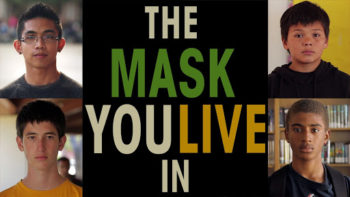by Leanne Westrick, Intern at MissRepresentation.org
If womanhood looked the way advertising portrayed it, it would go a little something like this:
- Being 20 through 35
- Being anywhere from a size 00 to a size 6 (keep in mind the definition of a plus-size model starts at size 6)
- Being defaultly white and if not white, than qualifying as an exotic sort of pretty
- Being attached to, or looking for, a man (sorry lesbians)
In this definition of womanhood, a good deal of the female population does not meet the requirements.
It is almost impossible to escape the fact that we, as women, are consumers in a culture dominated by our media. Advertisers are locked in a struggle to appeal to women as an economically independent powerhouse. However, the ways in which go about it leaves many wondering how well equipped advertisers are at appealing to a diversity of women, when they are holding an impossible number of requirements as the standard. In particular, there has been a lot of debate as to what significance the bared female midriff holds. Academic journal Feminism & Psychology has featured two articles, one from 2008 and another from 2011 specifically discussing just what the image of the midriff is supposed to mean to women.
Apparently, advertisers have intended for the bare midriff to be synonymous with empowerment. A woman with a bare midriff knows her sexual appeal and owns it. She is portrayed as a dominant master (mistress?) of her fate. Perhaps most importantly in this interpretation, this woman reads as desiring as much as she is desirable. She is not intended to just be an object of the male gaze. She is active in her own desire. This vein of logic is similar to viewing Lara Croft of Tomb Raider as a feminist icon. Ideally, if she desires something or someone, it is hers for the taking.
This is the image that women are being sold. Why? Because a woman accessing power through her own sexual agency is somehow less threatening than if she pursued power through other means. The part of the “midriff model” that tips its hand as exploitation rather than empowerment is the complete lack of other options in our media. While there is a lot to be said for the power that comes with understanding and owning sexuality, it cannot be our only understanding of female power. And yes, male bodies are often hyper-masculinized and therefore idealized, but a man can still rise to a position of respect without regard to his body.
Our media is far more receptive to a man’s access to power through his intelligence or his financial success. Three of the four provided requirements that legitimize womanhood regard the female body. Can the same be said for men? The media’s definition of a man, while nowhere near the spectrum that exists in real life, is still far broader than the media’s definition of a woman.
Women are aware of the disconnect. They aren’t just passively consuming the images that are being provided. In a 2011 study, women were asked to look at a “midriff model” ad and respond. While they agreed that she seemed powerful, her power had less to do with her and more to do with how she appealed to a male-dominated power structure. The model wasn’t dressed for herself as much as she was dressed for validation. In the end it’s men – who have been conditioned by an impossible image of beauty – holding the power of validation.
So the sexually dominant, independent, midriff-bearing model isn’t necessarily the beacon that women can follow into equality. In fact, rather than feeling as though they were empowered by such images, women reported feeling distanced from the woman used in the ad.
As much as advertisers claim that they are only using what works – what women “want” to see – what they are really using is what men have been told to want. Advertisers aren’t selling what women want to be, they’re selling what they think women should want to be. Arguably the goal of advertising is to sell, and the current model is indeed pretty successful, but it leaves women – especially young girls – striving and failing to reach an impossible goal. And the price of this continues to take its toll on our culture.
Sources:
Gill, Rosalind. “Empowerment/Sexism: Figuring Female Sexual Agency in Contemporary Advertising.” Feminism & Psychology 18 (2008):35-50.
Malson, Helen and Halliwell, Tichner, Rúdólfsdottir. “Post-feminist Advertising Laid Bare: Young Women’s Talk About the Sexually Agentic Women Woman of ‘Midriff.’ Advertising.” Feminism & Psychology 21 (2011): 74-99.
Leanne is an intern with MissRepresentation.org and a student at the University of San Francisco.



